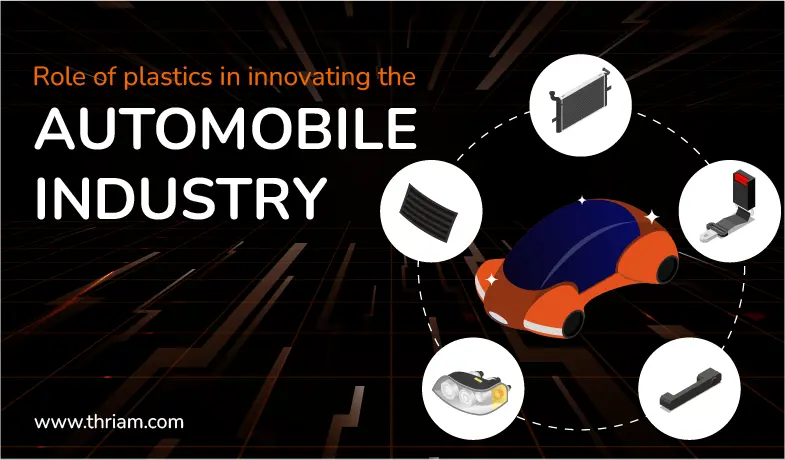The Future is Plastic: Latest Trends in the Automotive Plastic Industry
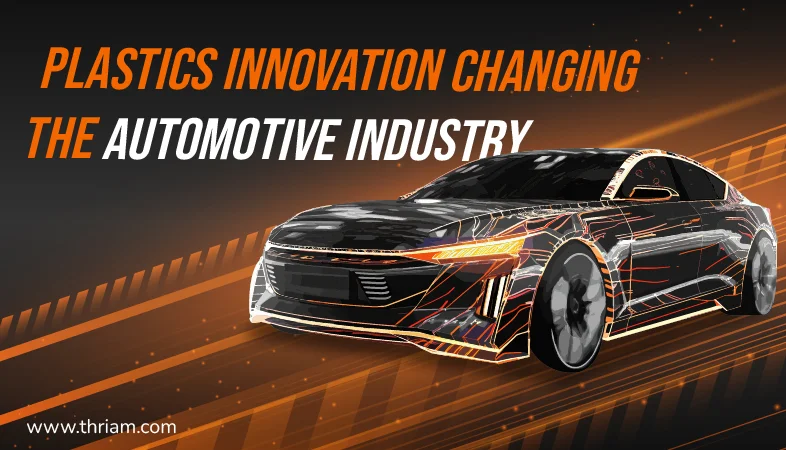
Introduction
Plastic has become an indispensable material in the automotive industry, revolutionizing vehicle design and performance. Over the years, the use of plastic in cars has evolved, leading to continuous innovation and the adoption of new technologies. In this blog, we will explore the latest trends in the automotive plastic industry and their potential impact on the future of vehicles.
Evolution of Automotive Plastics:
Discuss the historical use of plastics in the automotive industry and how it has evolved over time - Plastics have been used in the automotive industry for over a century. In the early 1900s, the availability of Bakelite, a form of plastic, led manufacturers to experiment with using it in automotive parts. However, widespread use of plastics in cars didn't take off until the mid-20th century.
Initially, plastics were primarily used for interior components such as door panels, dashboards, and seats. These plastics were often considered a cheap substitute for traditional materials like leather and metal. However, the development of new plastics with improved performance and design capabilities changed that perception.
In the 1960s, General Motors introduced the first plastic-bodied vehicle, the Pontiac Fiero. The car's body panels were made of a type of plastic called sheet-molded composite (SMC), which was light, durable, and resistant to corrosion. The use of SMCs marked the first time plastics were used for exterior car parts on a large scale.
Throughout the 1970s and 1980s, advancements in plastic technology led to increased usage in other areas of the car. Plastics were used for fuel tank components, bumpers, and even engine parts. One of the most significant uses of plastics came with the development of airbags. Initially designed to be contained within the steering wheel, airbags were made possible by using durable and flexible plastic materials.
In recent years, plastics have become an essential component in the automotive industry, with over 50% of car parts made of plastic. Plastics are used to create lightweight car parts, reducing the overall weight of the car and increasing fuel efficiency. With environmental concerns growing, the trend is to use more eco-friendly and sustainable plastics in the automotive industry.
Overall, the historical use of plastics in the automotive industry started with interior components, but the development of more advanced plastics has led to increased usage in exterior components and engine parts. The trend is to create lightweight and sustainable materials for automotive components, making plastics a fundamental material in the industry moving forward.
Plastic Material Innovations in the Automotive Industry
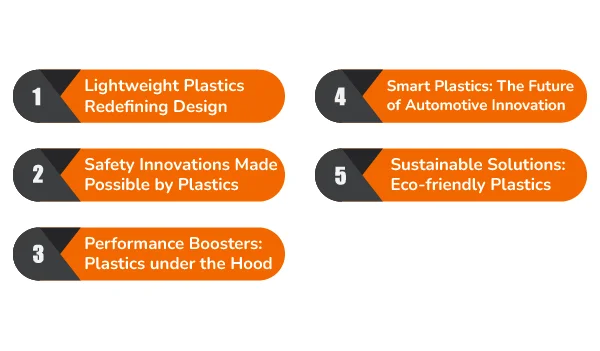
Advances in lightweight plastics have played a crucial role in improving fuel efficiency in vehicles. With the increasing focus on sustainability, the automotive industry is also adopting eco-friendly plastics, contributing to greener transportation. Moreover, high-performance plastics have boosted safety and durability, ensuring robustness in automotive design.
1. Lightweight Plastics Redefining Design:
- Lightweight plastics, such as carbon fiber-reinforced polymers (CFRPs), are enabling designers to reimagine vehicle exteriors and interiors.
- By replacing traditional materials like steel and aluminum, these lightweight plastics contribute to improved fuel efficiency and overall performance.
- Moreover, the flexibility of plastics allows for intricate and customized design features that enhance aesthetics and functional aspects of vehicles.
2. Safety Innovations Made Possible by Plastics:
- LPlastics play a critical role in enhancing safety features in vehicles, protecting both drivers and passengers in the event of a collision.
- Advanced plastics, such as high-strength composites, provide optimal impact resistance, absorbing and dispersing energy during accidents.
- Airbags, a vital safety component, utilize flexible and durable plastic materials to rapidly deploy and cushion occupants.
3. Performance Boosters: Plastics under the Hood:
- New plastics are driving performance improvements in engine components, optimizing efficiency and durability.
- Heat-resistant plastics are replacing traditional materials in engine parts, reducing weight and increasing efficiency without compromising performance.
- Plastics also contribute to noise and vibration reduction, enhancing the driving experience by creating a quieter and smoother ride.
4. Smart Plastics: The Future of Automotive Innovation:
- The development of smart plastics is opening up new possibilities for vehicle design and functionality.
- Thermochromic and photochromic plastics can change color based on environmental conditions, improving visibility and safety.
- Shape-memory plastics allow for adaptive design features, such as active aerodynamics, that enhance performance and efficiency.
5. Sustainable Solutions: Eco-friendly Plastics:
- The automotive industry is shifting towards sustainability, and plastics are not exempt from this trend.
- Recycled plastics are being used in car manufacturing, reducing the industry's environmental footprint.
- Bioplastics, derived from renewable sources, offer a greener alternative to traditional plastics, ensuring a more sustainable future for the automotive industry.
Integration of Plastics in Vehicle Design
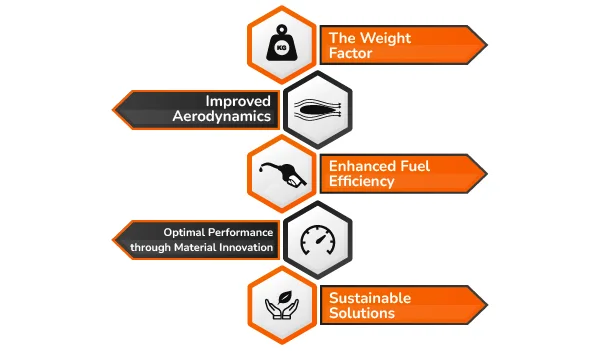
Plastics are extensively used in both exterior and interior design elements of vehicles. From sleek body panels to aerodynamic components, plastic offers designers flexibility and freedom of creativity. The interior of cars also benefits from the use of plastics in features like dashboards, seats, and trim, enabling enhanced comfort and aesthetics. Furthermore, as we move towards autonomous vehicles, the role of plastics in enabling advanced sensor integration and connectivity cannot be overlooked.
As the automotive industry strives towards a greener future, the incorporation of lighter-weight plastic materials has emerged as a key solution to improve fuel efficiency and sustainability. With advancements in plastic technology, manufacturers are replacing traditional heavy materials with lightweight plastics to reduce vehicle weight without compromising safety or performance. In this article, we will explore how lighter-weight plastics are revolutionizing fuel efficiency in cars and contributing to a more sustainable automotive industry.
The Weight Factor:
The weight of a vehicle directly impacts its fuel efficiency, with lighter vehicles requiring less energy to propel and traverse.
Traditional materials like steel and aluminum are being substituted with lighter-weight plastics, significantly reducing overall vehicle weight.
Plastics such as carbon fiber-reinforced polymers (CFRPs) and high-strength composites are gaining popularity due to their impressive strength-to-weight ratios.
Improved Aerodynamics:
Lighter-weight plastics facilitate the design of sleek, aerodynamic shapes that reduce drag and wind resistance.
Smooth plastic surfaces minimize air turbulence, allowing the vehicle to glide through the air more efficiently.
Enhanced aerodynamics contribute to a reduction in fuel consumption and greenhouse gas emissions, making cars more sustainable.
Enhanced Fuel Efficiency:
When vehicle weight is reduced, less energy is required to accelerate, decelerate, and maintain speed.
With lighter-weight plastics, cars can achieve better mileage and reduce the consumption of fossil fuels.
This improvement in fuel efficiency not only benefits the environment but also leads to cost savings for car owners.
Optimal Performance through Material Innovation:
Lighter-weight plastics are not just about reducing weight; they also contribute to improved performance.
Advanced plastic composites can offer high strength, rigidity, and durability, ensuring the structural integrity of the vehicle.
These materials can absorb and distribute impact energy, enhancing safety while reducing the overall weight of safety components.
Sustainable Solutions:
The use of lighter-weight plastics aligns with the automotive industry's increasing focus on sustainability.
Plastics derived from renewable resources, such as bio-based polymers, reduce reliance on fossil fuels and lower carbon emissions.
Additionally, many plastic components in vehicles can be recycled, reducing waste and promoting a circular economy.
Recycling and Sustainability Efforts
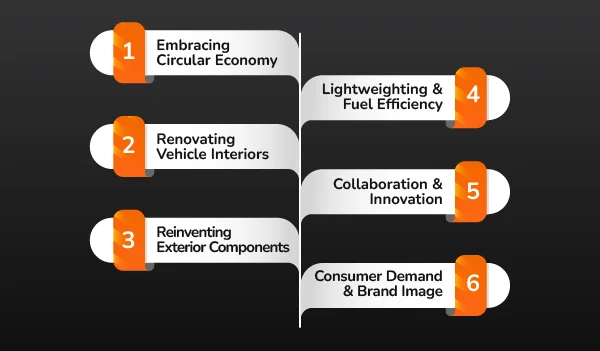
The automotive industry has long been associated with environmental concerns, mainly due to the carbon emissions from vehicles. However, a promising trend is emerging that focuses on reducing waste and environmental impact through the use of recycled plastics in vehicle manufacturing. This article will delve into how recycled plastics are being utilized in the automotive industry, the benefits they bring, and their potential to reshape the future of vehicle production.
Embracing Circular Economy:
The use of recycled plastics in vehicle manufacturing aligns with the principles of the circular economy, where materials are kept in use for as long as possible.
By recycling plastics from end-of-life vehicles and other sources, manufacturers are reducing the amount of plastic waste sent to landfills or incinerators.
This shift towards a circular economy minimizes the extraction of new resources, conserves energy, and reduces greenhouse gas emissions.
Renovating Vehicle Interiors:
Recycled plastics find a multitude of uses in vehicle interiors, ranging from dashboard components to seating materials.
Materials like recycled polyethylene terephthalate (PET) are transformed into fabrics for seat covers, headliners, and carpeting.
Manufacturers are also incorporating recycled plastics into dashboards, door panels, and center consoles, promoting a more sustainable approach to interior design.
Reinventing Exterior Components:
Recycled plastics are increasingly being utilized in the production of exterior components, including bumpers, wheel arch liners, and body panels.
These components are often manufactured using a combination of recycled plastics, reinforcing fibers, and thermoplastic resins.
By using recycled materials, manufacturers reduce the need for virgin plastics, conserving natural resources and minimizing energy consumption.
Lightweighting and Fuel Efficiency:
In addition to environmental benefits, the use of recycled plastics contributes to lightweighting vehicles, enhancing fuel efficiency and reducing emissions.
By replacing traditional metal components with lightweight recycled plastics, manufacturers achieve weight reduction without compromising safety or performance.
Lighter vehicles require less energy to operate, leading to reduced fuel consumption and lower greenhouse gas emissions.
Collaboration and Innovation:
The trend of using recycled plastics in vehicle manufacturing is driven by collaboration between automotive manufacturers, recycling facilities, and research institutions.
Efforts to identify new technologies for plastic recycling, develop innovative materials, and optimize manufacturing processes are crucial in achieving sustainable vehicle production.
Ongoing research focuses on further advancements in recycling techniques and the development of high-performance recycled plastic materials.
Consumer Demand and Brand Image:
The increasing demand for sustainable products is influencing consumer choices in the automotive market.
Manufacturers that prioritize sustainability and utilize recycled plastics in their vehicles can strengthen their brand image and appeal to environmentally conscious consumers.
Embracing recycled plastics not only reduces environmental impact but also positions manufacturers as champions of sustainability.
Impact of Plastic Industry Trends
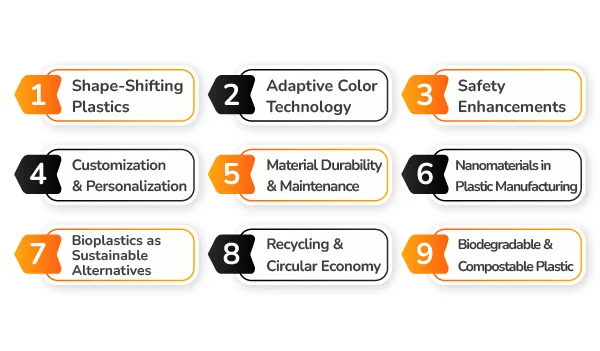
The world's rapid advancements in plastic technology have made lightweight plastics an essential part of numerous industries, including aerospace, automotive, and electronics. The constant demand for better and more sustainable materials has pushed manufacturers to come up with new manufacturing techniques and innovative designs for lightweight plastics. In this article, we will explore how the latest manufacturing techniques and innovative designs are pushing the boundaries of what's possible with lightweight plastics.
Additive Manufacturing:
Additive manufacturing, also known as 3D printing, is a process that builds objects layer by layer by depositing a material onto a surface.
This technology enables the creation of complex shapes and structures that would not be possible with traditional manufacturing techniques.
With 3D printing, manufacturers can tailor parts to specific applications, optimizing their design for weight, strength, and durability.
Hybrid Materials:
Hybrid materials combine the advantages of different materials, giving them new properties and applications.
Lightweight plastics can be combined with other materials, such as metals, ceramics, or natural fibers, to create hybrid composites with improved performance characteristics.
Hybrid materials are especially effective in applications where high strength and stiffness are required, such as in aircraft and automotive components.
Nanotechnology:
Nanotechnology involves the manipulation of materials at the atomic and molecular scale to create new materials and devices.
Nanomaterials, such as carbon nanotubes, graphene, and nanocellulose, are increasingly being used in lightweight plastic composites for their superior strength and durability.
Nanotechnology allows the development of novel lightweight materials with targeted properties, such as improved thermal conductivity or electrical conductivity.
Sustainable Solutions:
As sustainability becomes a key focus of many industries, lightweight plastics are evolving to meet the demand for more eco-friendly materials.
Manufacturers are using recycled plastics, bioplastics, and other sustainable alternatives to traditional plastics to create lightweight, yet environmentally friendly products.
Potential Future Developments
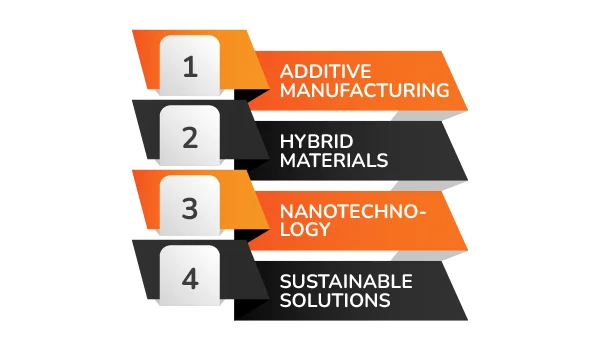
The possibility of smart plastics being incorporated into cars, such as plastic that can change color or shape based on driving conditions.Advancements in technology continue to revolutionize the automotive industry, pushing the boundaries of what is possible in terms of convenience, safety, and aesthetics. One exciting possibility on the horizon is the integration of smart plastics in cars, capable of changing color or shape in response to driving conditions. This article explores the potential of smart plastics and how they could enhance the driving experience while ushering in a new era of vehicle customization.
Shape-Shifting Plastics:
Shape-shifting plastics, or polymorphs, have the ability to change their structural configuration when exposed to specific stimuli, such as temperature or pressure.
In the automotive world, shape-shifting plastics could be used to enhance aerodynamics, performance, and safety by adjusting the vehicle's shape in real-time.
For example, external panels could morph to reduce drag at high speeds or improve stability during adverse weather conditions, optimizing overall vehicle efficiency.
Adaptive Color Technology:
Smart plastics with adaptive color capabilities have the potential to transform the aesthetics of vehicles on demand.
By incorporating technologies such as thermochromism or electrochromism, car manufacturers could create exteriors or interiors that change color in response to external factors or user preferences.
Imagine a car that alters its color to match the environment, increasing visibility or reducing heat absorption, or a vehicle with customizable interior lighting to suit the driver's mood.
Safety Enhancements:
The integration of smart plastics could greatly enhance safety features within vehicles.
For instance, imagine plastic components with embedded sensors that change color or texture when detecting potential hazards on the road, providing real-time visual cues to drivers.
Smart plastics could also contribute to increasing visibility by dynamically adjusting the reflectivity of external surfaces, improving visibility at night or in challenging weather conditions.
Customization and Personalization:
Smart plastics offer unprecedented opportunities for vehicle customization and personalization.
Car owners could have the ability to change the exterior color or pattern of their vehicle at will, without the need for traditional repainting.
Advanced customization options could revolutionize the automobile market, enabling drivers to express their individuality and keep up with emerging trends easily.
Material Durability and Maintenance:
The introduction of smart plastics in cars brings concerns regarding their durability and maintenance.
Manufacturers would need to ensure that these materials possess the required flexibility, resilience, and longevity to withstand the demands of daily use and environmental conditions.
Proper testing and continuous research and development efforts would address any potential challenges, ensuring smart plastics meet the rigorous safety and quality standards expected from automotive components.
Nanomaterials in Plastic Manufacturing:
Nanomaterials, such as carbon nanotubes and graphene, offer unique properties that can enhance plastic materials in terms of strength, conductivity, and transparency.
By incorporating nanomaterials into plastic matrices, manufacturers can create lighter, stronger, and more durable products with improved electrical conductivity, making them ideal for various industries, including automotive, aerospace, and electronics.
Nanocomposites can also lower the permeability of plastics, increasing their barrier properties against gases, water, and UV radiation, making them suitable for packaging and insulation applications.
Bioplastics as Sustainable Alternatives:
With growing concerns about plastic waste and its impact on the environment, there is a rising trend towards using bioplastics, which are derived from renewable sources such as corn starch, sugarcane, or algae.
Bioplastics offer several advantages, including reduced carbon footprint, biodegradability, and compatibility with existing plastic manufacturing processes.
These sustainable alternatives can be used in applications such as packaging, disposable cutlery, and agricultural films, where single-use plastics are prevalent.
Recycling and Circular Economy:
The future of plastic usage also involves a shift towards a circular economy, where plastics are recycled, reprocessed, and reused instead of being discarded as waste.
Advancements in recycling technologies, such as chemical recycling and depolymerization, offer the potential to recover valuable resources and transform used plastics into high-quality recycled materials.
Implementing efficient recycling practices and creating closed-loop systems will contribute to reducing plastic waste and conserving resources.
Biodegradable and Compostable Plastics:
As the need for sustainable materials continues to grow, the development of biodegradable and compostable plastics is gaining traction.
These plastics can break down naturally in the environment or in composting facilities, reducing the long-term environmental impact.
While biodegradable and compostable plastics have potential, careful consideration is required to ensure proper disposal infrastructure exists to leverage their full benefits.
Conclusion
Plastic has undoubtedly transformed the automotive industry, with continuous innovations in material development and integration. The latest trends in the automotive plastic industry present exciting prospects for the future of vehicles. From lightweight and eco-friendly plastics to advanced recycling techniques, the industry is moving towards a more sustainable and efficient approach. As we navigate the future, it is crucial for manufacturers, designers, and policymakers to prioritize innovation and sustainability to ensure a brighter, greener future for the automotive industry.


